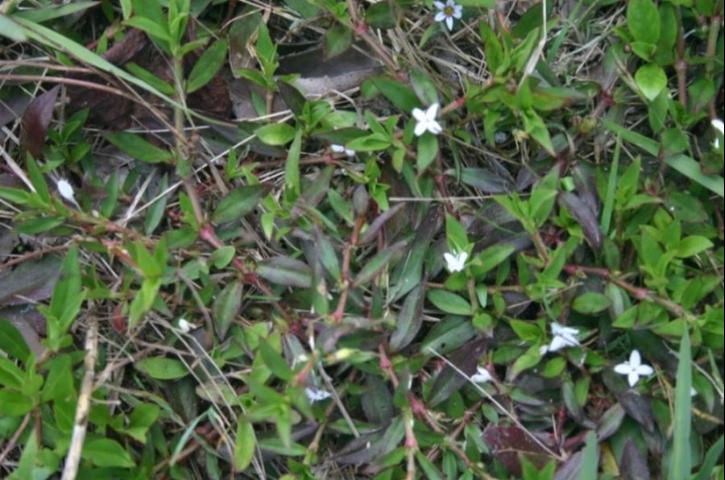
Larry Williams
UF/IFAS Extension Agent
Okaloosa County
lwilliams@co.okaloosa.fl.us
Virginia buttonweed (Diodia virginiana) is a difficult-to-control lawn weed. Factors that result in this weed being difficult to control include the following.
- It is a perennial plant native to the Southeastern United States.
- Spreads by seeds produced above or below ground, broken stems or roots.
- Its seed float and water helps spread the weed.
- It prefers moist areas and often is first found in low areas of the lawn. If not removed, the weed will spread.
- Clippings from mowing or weedeating can establish into mature plants.
- It can form dense mats in established turf.
- It can tolerate mowing heights as low as ½ inch.
- Hand removal is often ineffective because stem or root fragments left behind can produce additional plants.
- Premergence herbicides provide poor control due to vegetative reproduction.
- Effective postemergence herbicides are few and are poorly available for home use.
The first line of defense in controlling Virginia buttonweed is to make sure your lawn is irrigated on an as needed basis. You’ll find it difficult or impossible to control this weed if you water on a frequent schedule (every day, every other day, every third day). An established lawn does not need or benefit from a frequent, shallow irrigation schedule. Read the UF/IFAS Extension publications “Let Your Lawn Tell You When to Water” and “How to Calibrate Your Sprinkler System,” available online at http://hort.ifas.ufl.edu/yourfloridalawn or from your County Extension Office. Postemergence herbicides containing carfentrazone can provide good control of Virginia buttonweed when used correctly. Spot treat areas where Virginia buttonweed first shows up to avoid having to treat larger areas of the lawn. Carfentrazone can be used on all of our warm-season lawn grasses and is found in herbicide products for home use such as Fertilome Weed Free Zone, Ortho® Weed-B-Gon Max® and the professional use product Quicksilver™. Repeat applications may be required as regrowth of Virginia buttonweed occurs. Follow label directions and precautions when using any pesticide, including herbicides.

